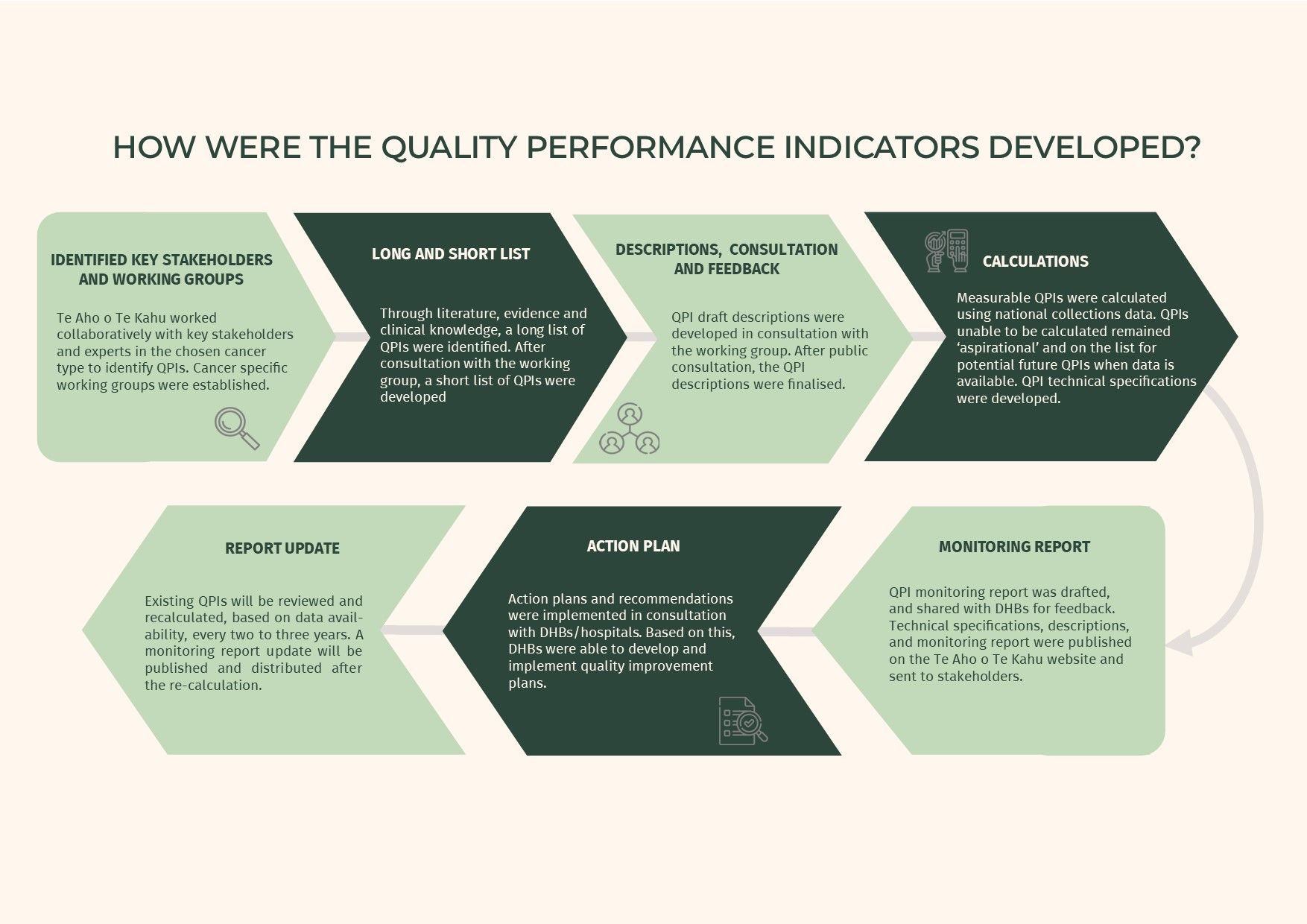In addition to internal experts and consultation, the QPI programme is supported and advised by a range of clinical leadership and advisory groups including:
Clinical Assembly
The Clinical Assembly provides clinical advice to support the long-term strategic direction for reducing cancer incidence and improving cancer services across the cancer continuum. This includes driving equitable health outcomes for priority populations, specifically focusing on Māori, Pacific peoples, those who live in rural and highly deprived areas, those with poor mental health and disabled people.
QPI Advisory Group
The QPI Advisory Group provides strategic and operational advice for the QPI programme. The group provides high-level review of deliverables to ensure that Te Aho o Te Kahu provides intelligence that is high-quality and relevant for the cancer sector overall. In addition, to provide ongoing support for the QPI programme within the cancer sector.
Cancer-specific working groups
The cancer-specific working groups support Te Aho o Te Kahu to promote a nationally co-ordinated and consistent approach to the delivery of care for people with cancer. In addition, to promote equitable, timely and quality care for those with cancer and family/whānau.
Craft working groups
Radiation Oncology Working Group, Medical Oncology Working Group, Haematology Working Group
The craft working groups monitor system performance and providing advice on relevant clinical and service delivery issues including clinical effectiveness, service improvement, service development, treatment guidelines and service standards.
Te Aho o Te Kahu provides the opportunity for health professionals involved in cancer diagnosis and treatment services, and other key stakeholders including Hei Āhuru Mōwai (Māori Cancer Leadership Aotearoa) and He Ara Tangata (Te Aho o Te Kahu Consumer Reference Group), to provide feedback on the QPIs prior to finalisation.
Public consultation
Draft versions of QPI documentation, such as the potential QPI description reports, are published on our website and feedback is welcome from stakeholders.








